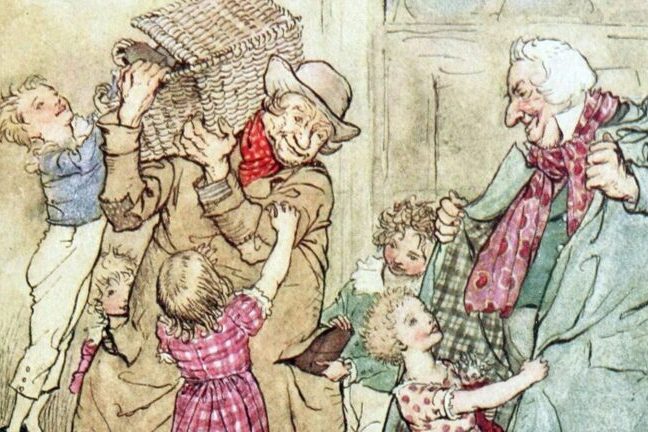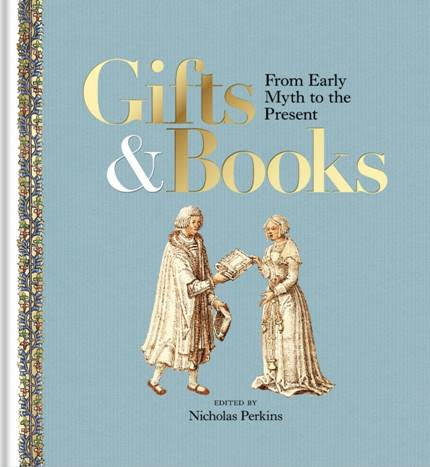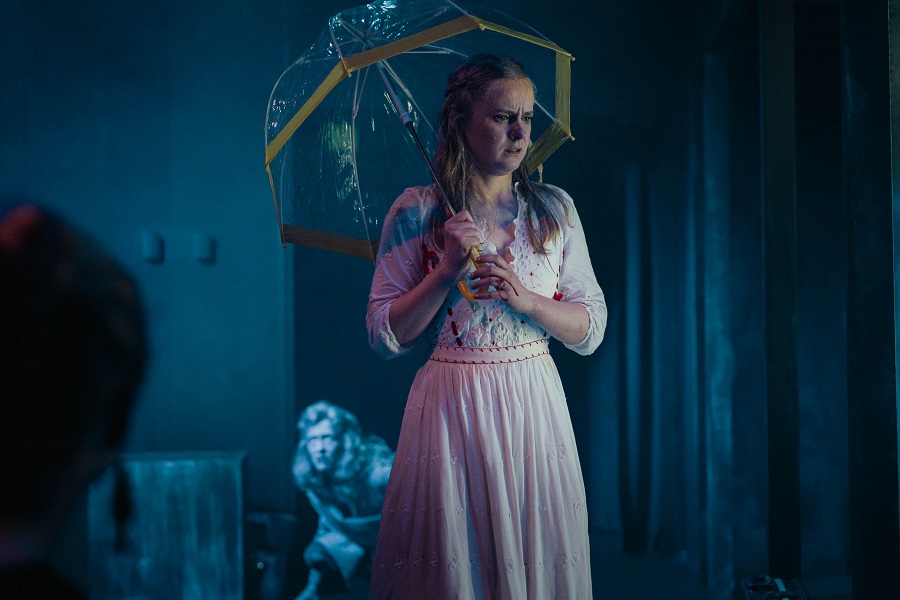
COLIN STEELE reviews two books with a seasonal theme. One reflects on how gifts are an integral part of human society, the other is a classic story of Christmas – a ‘luxury’ edition of Dickens’ ‘A Christmas Carol’.
NICHOLAS Perkins, professor of Medieval Literature at Oxford University, has brought together in “Gifts & Books – from Early Myth to the Present” (Bodleian Library), essays from a distinguished list of contributors to reflect on how gifts are an integral part of human society.

Gifts can either strengthen bonds of friendship or become a burden/problem to the recipient. In the context of the former, it was remarkable, as recently documented by Paul Brumell in “Diplomatic Gifts”, how many RM Williams boots were given by Australian prime ministers to overseas’ heads of states under the guise of diplomatic friendship.
In the context of unwanted gifts, the first essay begins with the words: “I fear the Greeks, even when bringing gifts”, referencing Virgil’s “Aeneid”, when a Trojan priest “eyes a supersized wooden horse with suspicion and dread” outside the gates of Troy and we all know what happened next.
Perkins’ contributors, in richly illustrated thematic chapters, draw inspiration from items, notably in Oxford’s Bodleian Library collections, to reflect on impulses “to give, receive and reciprocate”.
His book celebrates the “power that the gift generates”, an act that includes all cultures and faiths. In a chapter on the Buddhist traditions of gift, text and knowledge, Camillo Formigatti highlights the perfection of giving and the sacrificial body in the Buddhist tradition, emphasised in “The Birth Story of the Deer”, written on a set of palm-leaf folios.
The earliest item documented is a Sumerian clay tablet recording a legend about the epic hero Gilgamesh, dating to c.2000 BCE, which juxtaposes the temptation and deception of gifts. The most recent item is a 2023 exquisite deluxe pop-up book, “Dies Natalis”, by award-winning artist Paul Johnson, inspired by poetry and music, which he donated to the Bodleian.
Early gift examples include medieval manuscripts, reflecting when relationships between gods and humans were exemplified by holy offerings, and gifts made by and for Queen Elizabeth I. The young Princess Elizabeth wrote out her translation of “The Miroir or Glasse of the Synnefull Soule”, with the finely embroidered cover framing the initials of her stepmother, Queen Katherine Parr, to whom she gave the book as a New Year’s gift in 1544.
Power and politics intermingle in the giving of gifts as well as reflecting on social conditions. The 1789 publication, “The Life of Olaudah Equiano”, tells the story of Equiano, who was purchased as a slave and given as a gift by a captain to friends in England, but who managed to gain his freedom and write his own life story.
A topic also explored through children’s books, such as Zetta Elliott’s 2017 YA novel, “The Ghosts in the Castle”, which reflects on colonialism and slavery to emphasise the gift of freedom.
It’s interesting that Perkins says in an interview that his most treasured gift is Jack Fingleton’s “The Greatest Test of All”, covering the famous 1960 tied test match between Australia and the West Indies.
“My grandparents owned it, then gave it to me. It’s nostalgic, heroic, nerdy and reminds me of times with them in Lancashire. It even smells of their spare room!”, he said.
Charles Dickens, of course, is synonymous with Christmas. His first writing on the subject, “Christmas Festivities”, in 1835 reflected on the value of benevolence.
He wished that “Christmas lasted the whole year through”, it being a time of “rational goodwill and cheerfulness”. As Faith Binkes writes in her chapter, “The Gifts of Reading”, Dickens emphasised “responsibility and community, along with those bonds forged through the happiness of bringing happiness to others”.
DICKENS’ 1843 publication of “A Christmas Carol”, partly intended to be given as a present, sold 6000 copies on Christmas Day 1843. It has never been out of print and has helped to promote the idea of the Dickensian Christmas and the tradition of the Christmas gift book

What better Christmas gift in 2023 than the new “luxury” reprint edition, by the Bodleian Library, of Arthur Rackham’s classic illustrated “A Christmas Carol”, first published in 1915.
Rackham (1867-1939) one of the most celebrated painters of the British Golden Age of Illustration, created exquisite illustrations of Dickens characters including Marley’s ghost, Bob Cratchit’s slide down icy Cornhill, Mr and Mrs Fezziwig’s dance, and Ebenezer Scrooge. Rackham himself gave inscribed copies of the book as Christmas presents in December 1915, which now reach high prices when they come on the market. But no matter the price of a gift, it is the act of giving that is important.
Who can be trusted?
In a world of spin and confusion, there’s never been a more important time to support independent journalism in Canberra.
If you trust our work online and want to enforce the power of independent voices, I invite you to make a small contribution.
Every dollar of support is invested back into our journalism to help keep citynews.com.au strong and free.
Thank you,
Ian Meikle, editor




Leave a Reply